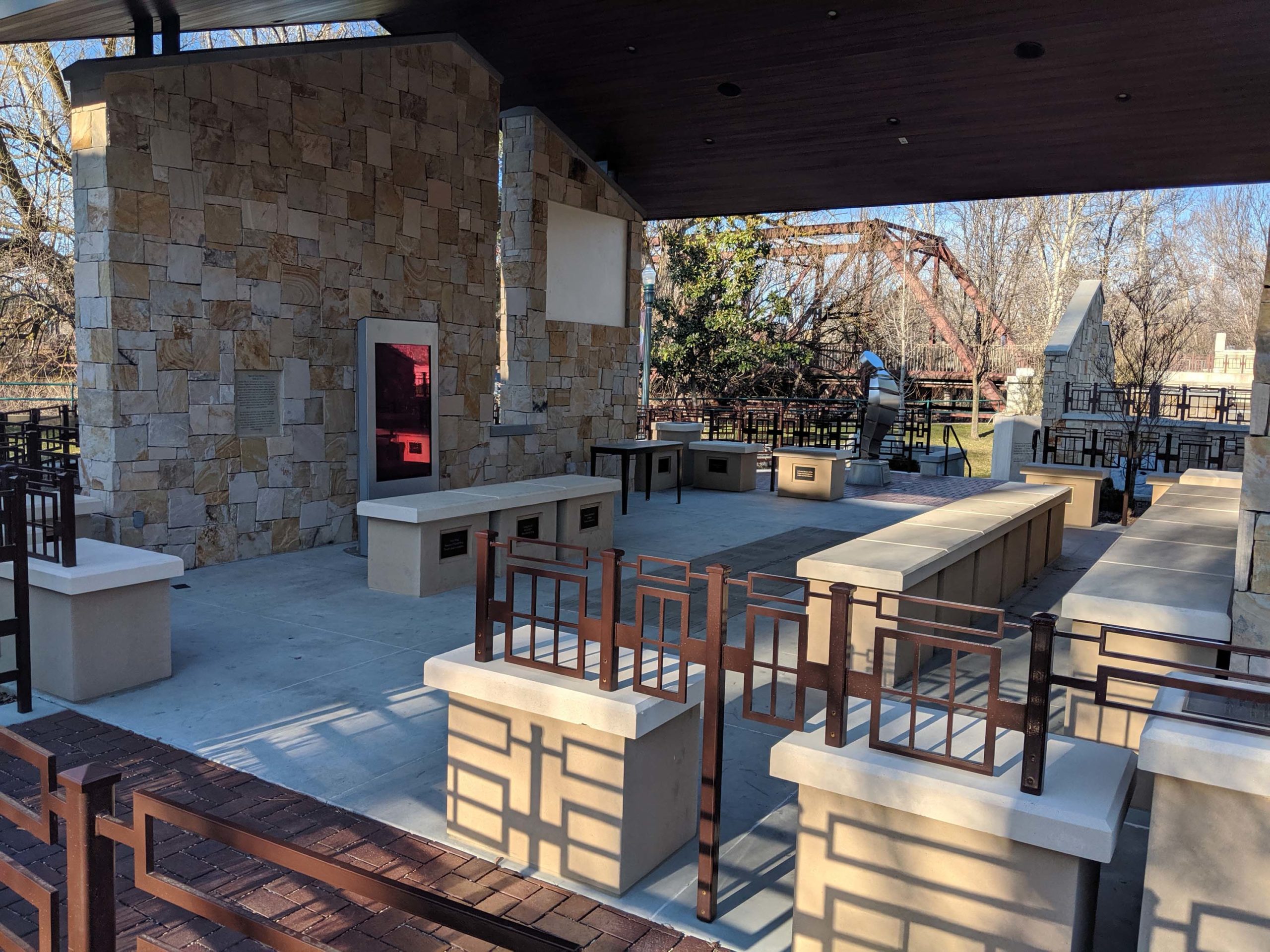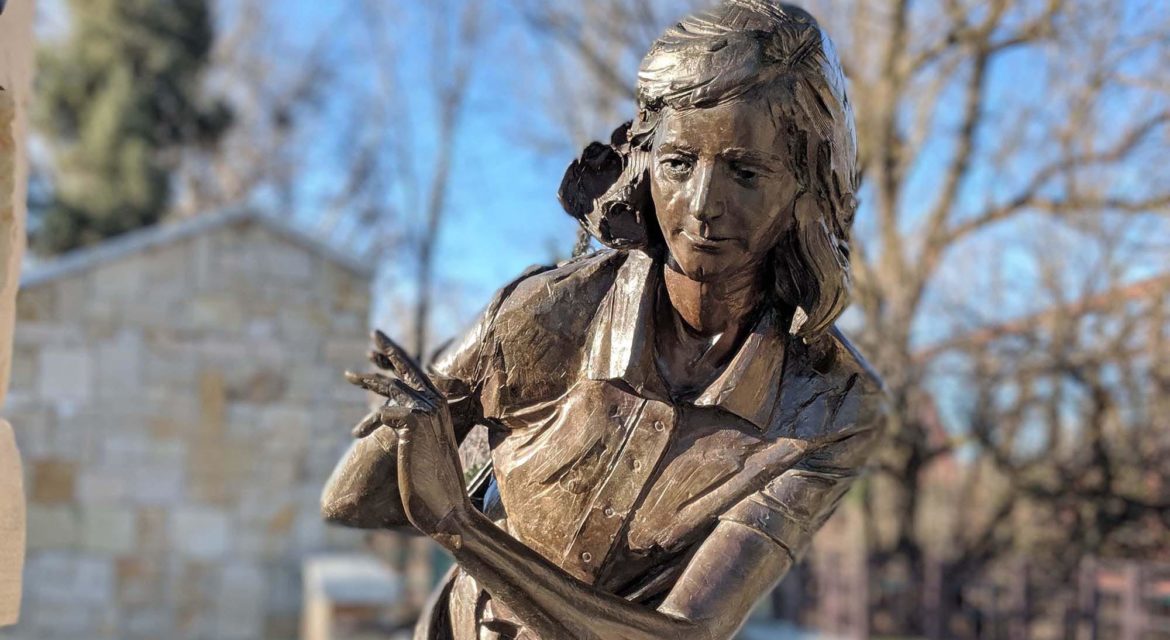 The Idaho Anne Frank Human Rights Memorial was designed to honor the triumph of the human spirit as well as the legacy of Anne Frank’s faith in humanity. One of the only places in the world where the full Universal Declaration of Human Rights is on public display, the .81-acre educational park encourages visitors to think and talk about human rights in a totally new perspective.
The Idaho Anne Frank Human Rights Memorial was designed to honor the triumph of the human spirit as well as the legacy of Anne Frank’s faith in humanity. One of the only places in the world where the full Universal Declaration of Human Rights is on public display, the .81-acre educational park encourages visitors to think and talk about human rights in a totally new perspective.

From Temporary Exhibit to Permanent Memorial
 In 1995, a traveling exhibit on Anne Frank, one of the most famous Jewish victims of the Holocaust, drew in tens of thousands of visitors from across Idaho. This interest drove an idea for a more permanent monument to her history and memory. Over the next few years, a group of community leaders, human rights stalwarts and citizens throughout the state and country worked to bring the memorial to life. In 2002, their efforts paid off when the Idaho Anne Frank Human Rights Memorial was opened to the public.
In 1995, a traveling exhibit on Anne Frank, one of the most famous Jewish victims of the Holocaust, drew in tens of thousands of visitors from across Idaho. This interest drove an idea for a more permanent monument to her history and memory. Over the next few years, a group of community leaders, human rights stalwarts and citizens throughout the state and country worked to bring the memorial to life. In 2002, their efforts paid off when the Idaho Anne Frank Human Rights Memorial was opened to the public.
The memorial was not intended to be a place to merely reflect on the horrors of the Holocaust though. Rather, it was designed to compel people to engage with one another and the history that the memorial represents. It does so via several major elements including the Attic Amphitheater, a 180-foot Quote Wall and the Rose Beal Legacy Garden. Human rights quotes from poets, activists, politicians and diplomats, some of whom lived through the Holocaust as well as those who did not, are featured throughout the Memorial.
 The Marilyn Shuler Classroom for Human Rights as well as the “The Spiral of Injustice” sculpture are the newest editions to the memorial. The classroom has space for 35 people and includes a digital kiosk that tells the stories of marginalized groups throughout Idaho in their own voices. The words “language, avoidance, discrimination, violence and elimination” are inscribed in the “Spiral of Injustice” in six different languages, highlighting what it can mean when words are used to demonize or marginalize others in the community.
The Marilyn Shuler Classroom for Human Rights as well as the “The Spiral of Injustice” sculpture are the newest editions to the memorial. The classroom has space for 35 people and includes a digital kiosk that tells the stories of marginalized groups throughout Idaho in their own voices. The words “language, avoidance, discrimination, violence and elimination” are inscribed in the “Spiral of Injustice” in six different languages, highlighting what it can mean when words are used to demonize or marginalize others in the community.
Centered around a life-size bronze statue of Anne Frank that depicts her as if she were pulling back an imaginary curtain and gazing out a window from the family’s attic hiding place, the memorial enables visitors to experience and interact with the legacy of human rights in countless ways.
Representing and Engaging with the Boise Community
Adjacent to the Boise River Greenbelt, the memorial is incredibly accessible for both residents and visitors. Visiting the Memorial is free-of-charge and open 24/7. Audio box technology provides an informative self-guided tour of the Memorial while virtual tours of the site are also available.
 Numerous representations of the Boise community are showcased all across the memorial. The Bethine and Frank Church Writing Table was created in honor of the man who served as an Idaho Senator from 1957 to 1981. He was instrumental in the passage of the first Civil Rights Bill since Reconstruction. Until her death in 2013, Bethine continued his legacy and was active in numerous civic activities. A bronze representation of Anne’s diary is located on the table.
Numerous representations of the Boise community are showcased all across the memorial. The Bethine and Frank Church Writing Table was created in honor of the man who served as an Idaho Senator from 1957 to 1981. He was instrumental in the passage of the first Civil Rights Bill since Reconstruction. Until her death in 2013, Bethine continued his legacy and was active in numerous civic activities. A bronze representation of Anne’s diary is located on the table.
The names of major donors are on the donor tablets near the Church Writing Table. The pavers were purchased by donors prior to the start of construction. Pavers can still be purchased and placed at the Memorial. The thoughts of donors are displayed on the benches, seats and pavers. These donations highlight was it can look like to make an idea like the Idaho Anne Frank Human Rights Memorial a reality.
Events and activities take place at the memorial throughout the year, and the site has come to serve as a convenient staging area for rallies, marches, and protests. This engagement further showcases what kind of an impact the Idaho Anne Frank Human Rights Memorial has had on the community and all of Idaho.
The Only Human Rights Memorial in the United States
 A contemplative space for reflection and meditation, the Idaho Anne Frank Human Rights Memorial has become a space that enables engagement between individuals and entire communities. Since it’s the only human rights memorial in the United States, it has been able to engage people on an even deeper level though. It makes a profound impact on visitors every time they’re there, regardless of how many times they’ve actually been to the memorial.
A contemplative space for reflection and meditation, the Idaho Anne Frank Human Rights Memorial has become a space that enables engagement between individuals and entire communities. Since it’s the only human rights memorial in the United States, it has been able to engage people on an even deeper level though. It makes a profound impact on visitors every time they’re there, regardless of how many times they’ve actually been to the memorial.
With a distinctive logo as well as a prominent position on various maps and guides of the city, the Idaho Anne Frank Human Rights Memorial highlights how memorials can impact residents and visitors on multiple levels to become an essential element of the present and future of an entire region and country.



